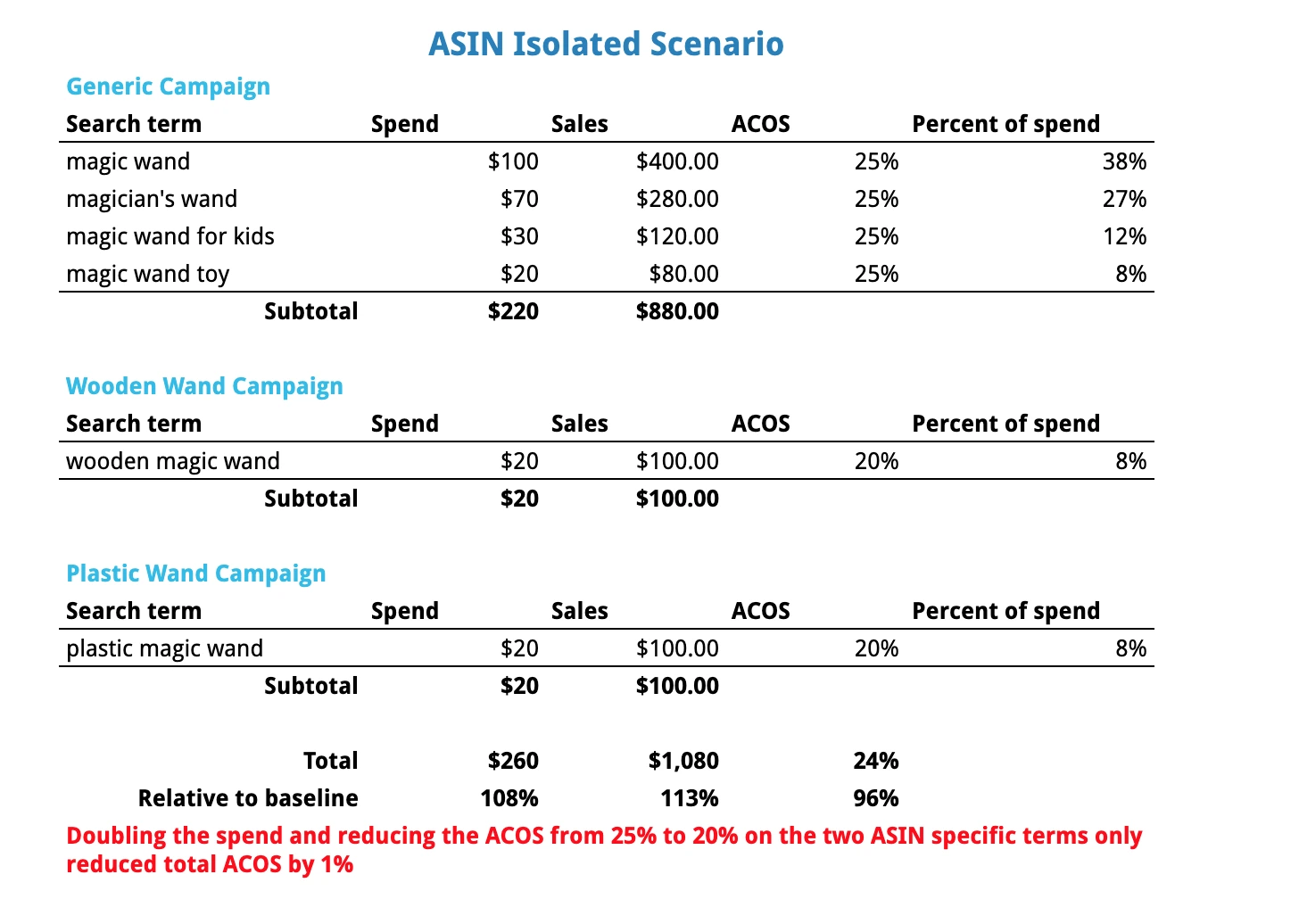
Advanced Amazon PPC Strategies: ISOLATED ASIN CAMPAIGNS

The crux of the Search Term Isolation strategy is the idea that having multiple keywords on a single search term makes that search term exponentially harder to manage. As you manage bid on one keyword, you may not actually be affecting the search term in question. Instead, you are just shifting impressions between the multiple keywords that are firing for that search term. This can mean that you are not actually managing the bid and you’re not making any efficiency gains.
For account managers with multiple related ASINs, this begs the question:
What do I do about ASINs that have unique search terms associated with them, but that generally overlap search terms with a larger portfolio of products?
The answer for most accounts is that account managers often overestimate the spend and impressions associated with these unique search terms. Here are three scenarios with different levels of separation for unique search terms and how the math breaks down:
In the baseline scenario, all products are grouped together. ASIN specific terms are not managed independently between ASINs and instead are allowed to be parsed for display by Amazon’s internal metrics.
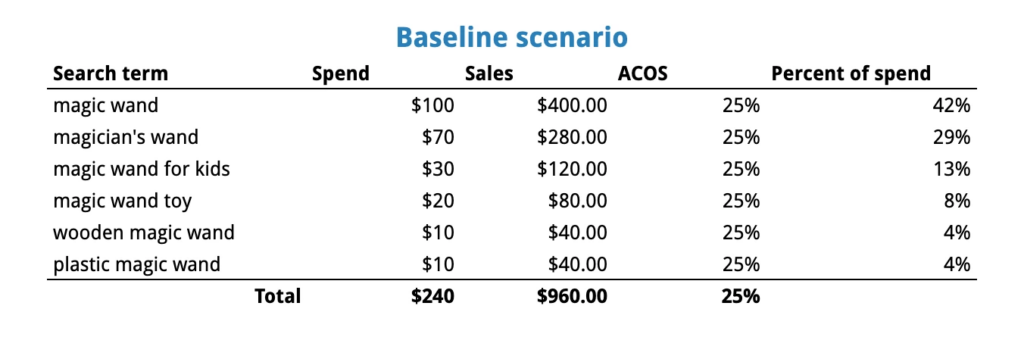
In the next scenario, ASIN specific terms are isolated in separate campaigns. The additional control on these unique terms drives more spend at a lower ACoS. The end result is a 1% decrease in ACoS across the category.
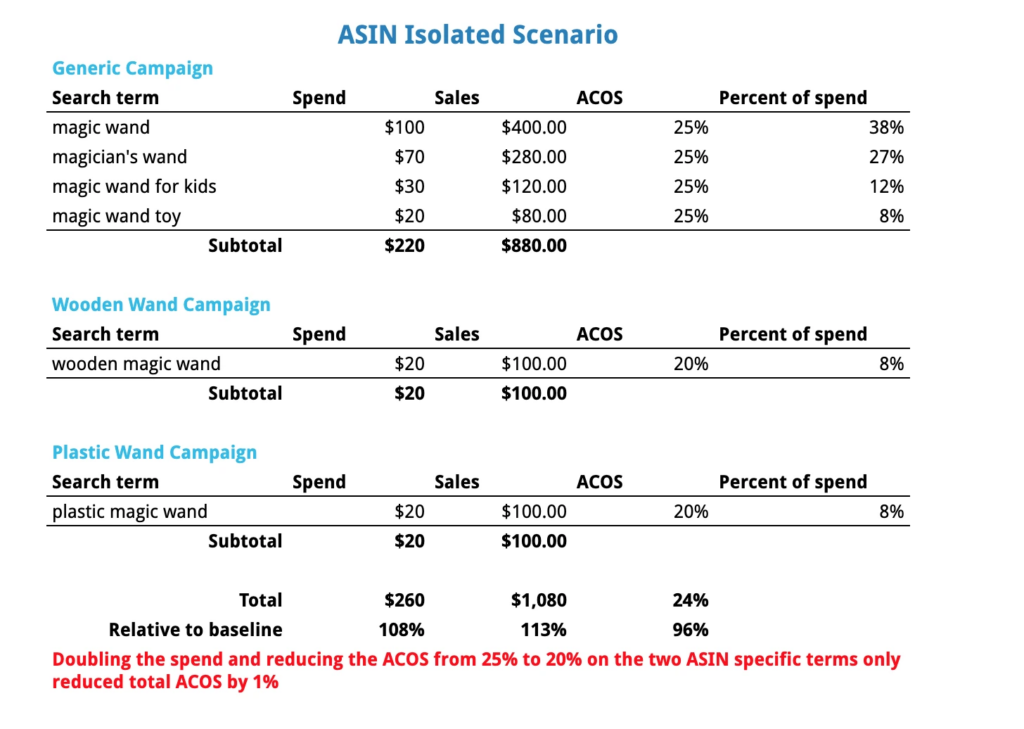
In a fairly extreme example, a 5x increase in spend on the ASIN specific terms along with a significant efficiency gain on those terms results in a 4% category wide ACoS decrease. This kind of performance improvement usually isn’t reasonable to expect and should be thought of as the upper bound of performance improvement.
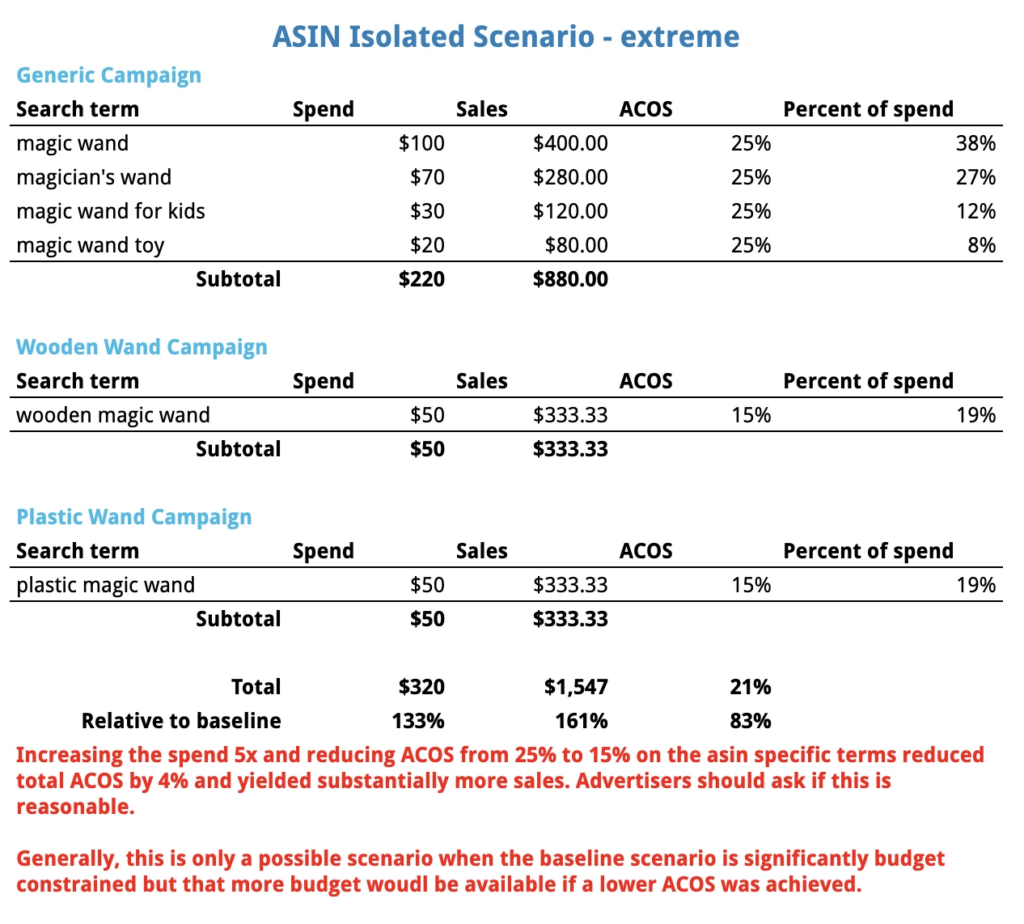
For most accounts, the additional work and complexity of isolating ASIN specific search terms will not be worth the return. Amazon will do some relevance parsing within ad groups and campaigns; so grouping very similar ASINs, even if they have some unique identifiers, is generally the best strategy both in terms of performance and in terms of manageability.
That being said, some account managers will do the math and find that breaking individual ASINs out in order to account for the unique search terms is a winning strategy for their particular accounts. A good rule of thumb is that if an ASIN-specific search term is in the top 5 search terms by spend across the generic campaigns AND is performing worse than might be expected if it was driving to a specific ASIN, splitting it out is likely worth the effort. In this case, Search Term Isolation can take a hit if not done carefully, but there is a way to both break out unique ASINs and maintain Search Term Isolation. This is an advanced technique that requires a deep understanding of Prestozon’s rules engine and a solid grasp of Amazon PPC.
You’ll begin with a standard Search Term Isolating campaign structure that will hold all your generic terms.
- Generic Auto
- Generic Research
- Generic Performance
These will include the standard Prestozon promotion rules:
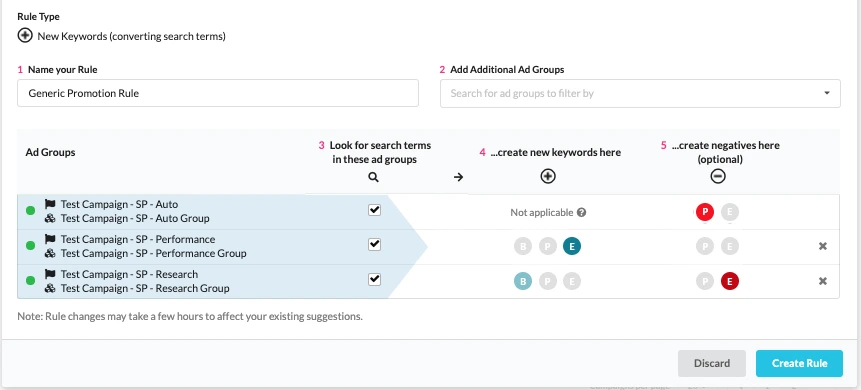
The next step is to create two campaigns for each ASIN, a Research and a Performance. These will also need their own promotion rules with this structure:
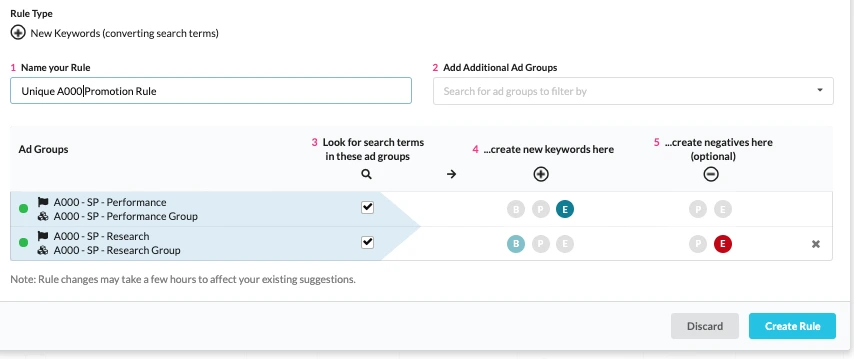
Once these are created, the most important step can be taken:
- Seed the unique research campaign with BROAD MATCH KEYWORDS that are unique to the product. If the identifying characteristic is the material, then ONLY seed the material words along with the product descriptor (e.g. “wooden wand” or “plastic wand”). If the identifying characteristic is a different size or color, then ONLY seed those keywords. These two campaigns are only for the unique search terms and so you should only seed the unique search terms in this campaign.
- Whatever seed keywords you put in the unique research campaign, you then must create NEGATIVE PHRASE MATCH KEYWORDS in all of the generic campaigns (Auto, Research and Performance). If you are creating multiple ASIN specific campaign sets, then you must also add the negative phrase keywords for each unique set into the other sets. So, for instance, if you are selling wooden magic wands and plastic magic wands, the unique term “wooden” might be a seed keyword in your wooden magic wand ASIN specific campaigns. This “wooden” term must then have negative phrase match keywords in all the generic campaigns as well as the specific campaigns for the plastic magic wand. Conversely, “plastic” might be a seeded keyword in the plastic ASIN, and so that keyword must be negated in the generic campaigns and the wooden campaigns.
You can have as many of these structures as you need, so long as each individual structure is set up as above. The campaigns for four specific ASINs on a single account would look like this:
- Generic Auto
- Generic Research
- Generic Performance
- A000 Specific Research
- A000 Specific Performance
- A001 Specific Research
- A001 Specific Performance
- A002 Specific Research
- A002 Specific Performance
- A003 Specific Research
- A003 Specific Performance
There would be 5 promotion rules total. The generic promotion rule, as outlined above. Then each campaign set would get its own unique promotion rule. We recommend doing this on the campaign level instead of the ad group level because having ASIN specific campaigns allows you to manage the budget for those ASINs independently. If you keep everything in the same campaign, a budget increase my simply go to the highest volume keywords instead of the best performing ones.
This setup will ensure the promotion and isolation of both generic terms that will cover the entire product group as well as the isolation of unique terms for each individual ASIN.
In conclusion, separating out ASINs in order to manage ASIN specific search terms is going to add a significant amount of complexity to an account. For most accounts, the math suggests that the return will not be worth the additional setup time and maintenance. However, for those accounts where the math does work in favor of isolated ASINs, you can build isolated ASIN structures within the the Prestozon rules framework, or within this Amazon PPC management software.
Achieve More Results in Less Time
Accelerate the Growth of Your Business, Brand or Agency
Maximize your results and drive success faster with Helium 10’s full suite of Amazon and Walmart solutions.

